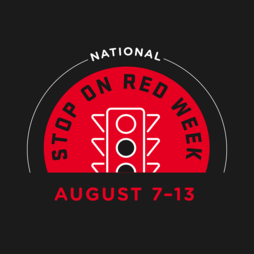|
August is also National Immunization Awareness Month. With all the focus and debate about the latest COVID-19 variants ongoing vaccine(s), one should not lose sight of the need for recommended ongoing routine immunizations for infants, adolescents, adults and seniors. These can include (but are not limited to) chickenpox (varicella); measles, mumps, rubella (MMR); diphtheria, tetanus, and pertussis (DTaP); hepatitis A & B; polio (IPV); human papilloks mavirus (HPV); flu and haemophilus influenzae type b (Hib) immunizations and vaccines.
Visit the Centers for Disease Control and Prevention (CDC) online for pertinent information, including their downloadable Immunization pdf Guide: CDC- Immunization Guide - Infants to Adults.
Also, see CDC - Immunization Awareness Month and related links at:
In concert with Immunization Awareness Month, August also reminds us that back-to-school is just around the corner. The National Safety Council (NSC) has an excellent Back to School family safety checklist for those with school-age children, and/or those frequenting or traveling through School Zones: NSC Back-To-School Checklist. Featured topics include:
- cross walks/pedestrians
- bikes
- buses
- teen drivers
- playgrounds & sports
- backpack safety

National Stop on Red Week is observed the first full week in August, and this year's observance will be held August 7-13, 2022. The National Coalition for Safer Roads (NCSR) is highlighting National Highway Traffic Safety Administration (NHTSA) estimates that an estimated 10,155 people were killed in crashes related to red-light running between 2008-20. In 2020, 928 people were killed, a 10 percent increase from 2019. Additionally, the Insurance Institute for Highway Safety (IIHS) found that about half of red-light running crash deaths involve pedestrians, cyclists and occupants in vehicles struck by the red-light runners.
Due to NCSR's advocacy in bringing Vision Zero to the forefront, more focus has been put on implementing safer road designs, utilizing technology, and educating drivers, pedestrians, and bicyclists in communities across the U.S. These efforts have seen the reduction of injuries associated with red-light running. In 2020, an estimated 115,741 people were injured in crashes involving red-light running, a 22 percent reduction from 2019. Safety for all road users must be the top priority for all individuals, policymakers, and communities to build a future of zero transportation deaths.
The NCSR highlights reasons why National Stop On Red Week is important:
-
It reiterates the importance of traffic signals. Often traffic signals are not taken seriously by people in a rush. Hence, road accidents are common across the world. The purpose of the week is to highlight the importance of traffic signals and the damage caused when the rules are ignored.
-
It teaches everyone to avoid reckless driving. The week focuses on how essential the red traffic light is to control speeding vehicles. It also brings the issue of reckless driving to the forefront.
-
It reintroduces traffic rules. While everyone knows the basic traffic rules, people sometimes forget how important they are and why they must be followed at all costs. Traffic laws curb unnecessary deaths and injuries for both drivers and pedestrians.
|
Regarding traffic safety, impaired driving is one of the deadliest and most often committed yet preventable crimes, and it remains a serious safety epidemic in our country.
The 2022 impaired driving national enforcement mobilization titled Drive Sober or Get Pulled Over goes into effect across the country from August 17-September 5, 2022.
Learn more about the mobilization online. Also, the National Highway Safety Traffic Administration's (NHTSA) 2022 Labor Day Impaired Driving Social Media Playbook resources can be downloaded.
International Overdose Awareness Day is August 31, 2022. The day draws attention to the many lives lost annually through chemical dependencies and addiction, and highlights ways to seek assistance and help for those affected.
This is a global observance event and aims to raise awareness of overdose and reduce the stigma of a drug-related death.
While opioids receive most the attention, all prescription and illicit drug use holds the potential for accidental overdoses. Overdose Awareness Day also acknowledges the grief felt by families and friends remembering those who have died or had a permanent injury as a result of drug overdose.
Visit the following web sites for more information:
Finally, as we move into the dog days of summer, do not forget to keep your workers and family members safe from heat-related illnesses. Remember that the OSHA Heat Stress awareness and prevention strategies involve three key words: Water. Rest. Shade.
Revisit the June and July issues of the Safety Corner for additional information regarding OSHA's new Heat Awareness National Emphasis Program (NEP). OSHA and its affiliate Center for Construction Research and Training (CPWR) have numerous Heat Awareness safety resources available to assist employers and workers with their Heat Illness Prevention compliance activities, including CPRW - Resources Library - Working In Hot Weather. These heat awareness public domain resources are also applicable to protect family and friends from heat-related illnesses.
As a look ahead preview, September includes National Farm/Agriculture Safety Week from September 18-24, with a week of daily safety messaging activities for our state's agriculture sector. Those wishing to get a preview and head start on planning can learn more at NECASAG - National Farm Safety & Health Week.
Additional topics of interest include school and autumn safety, National Disaster Preparedness Month, and Construction Suicide Awareness Prevention month. More to follow in the September DWD WC Safety Corner E-Update.
|